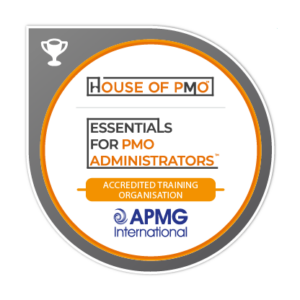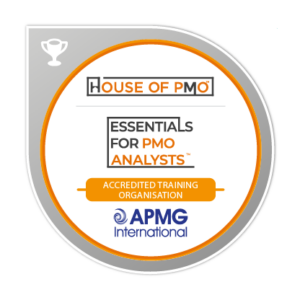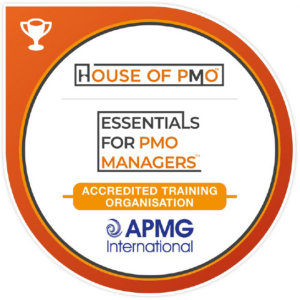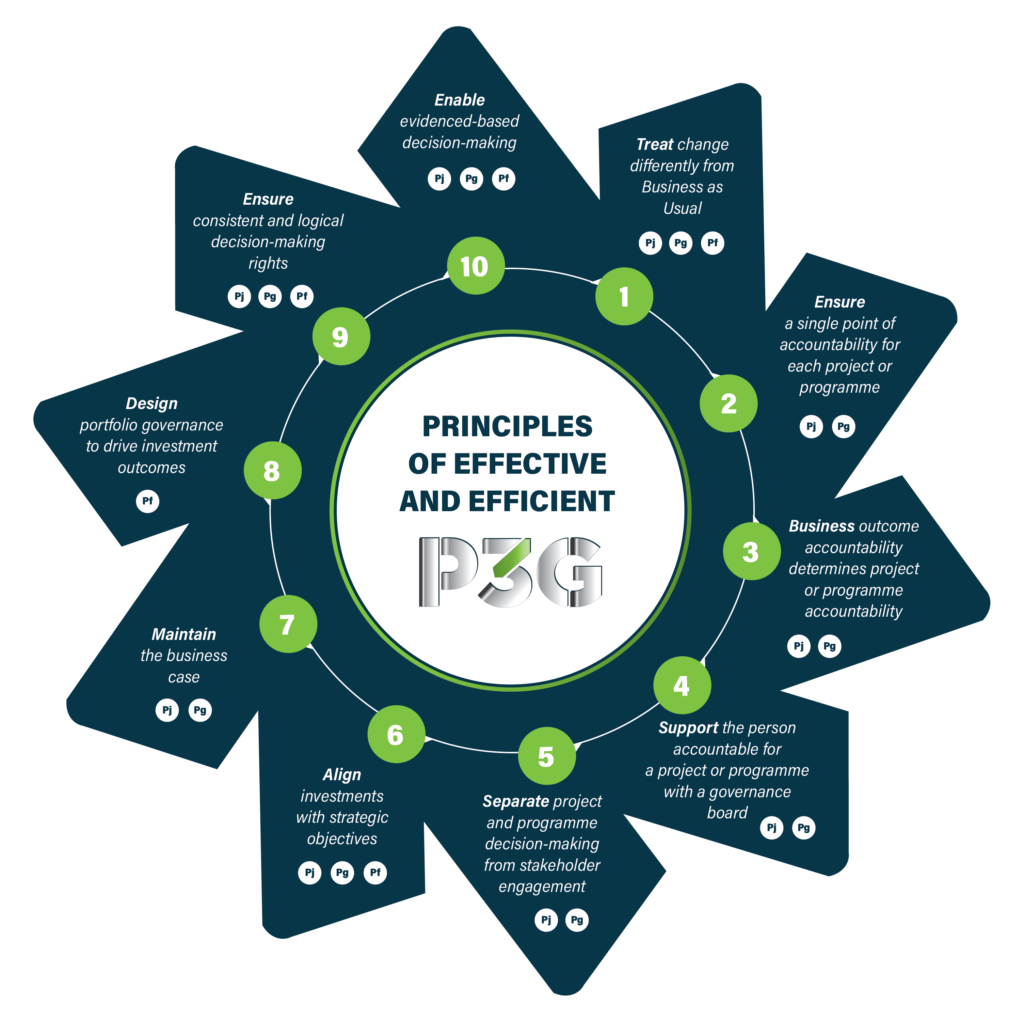
 The Benefits Management and the PMO course from PMO Learning is our most popular specialist course for organisations opting for PMO team training. It is most frequently requested to be run in-house so the whole team can learn together. Interestingly, it is the most popular with public sector organisations.
The Benefits Management and the PMO course from PMO Learning is our most popular specialist course for organisations opting for PMO team training. It is most frequently requested to be run in-house so the whole team can learn together. Interestingly, it is the most popular with public sector organisations.
A course on benefits management holds particular relevance to the public sector for several reasons. In the context of government organisations, effective benefits management is crucial for ensuring that public resources are allocated efficiently and that public services deliver value to society. Here are some key reasons why the benefits management course is the most popular with organisations in this sector:
- Public Accountability: In the public sector, there’s a heightened focus on accountability and transparency. A benefits management course equips professionals with the skills to identify, measure, and communicate the value derived from various projects and initiatives, contributing to increased accountability to the public.
- Resource Optimisation: Governments often operate with limited resources, and optimising the benefits derived from these resources is essential. A benefits management course provides tools and methodologies to assess and prioritise projects, ensuring that resources are allocated to initiatives that offer the most significant advantages.
- Policy Alignment: Public sector projects are often aligned with government policies and objectives. A benefits management framework helps in aligning project outcomes with broader policy goals, ensuring that public initiatives contribute effectively to the overall strategic direction of the government.
- Stakeholder Engagement: Public sector projects involve a diverse range of stakeholders, including citizens, government agencies, and external partners. Benefits management emphasises stakeholder engagement, ensuring that their perspectives are considered, and the delivered outcomes align with the needs and expectations of the public.
- Long-term Value: Many public sector projects have long-term implications, and assessing benefits over an extended period is crucial. A benefits management course provides insights into methodologies for sustained value realisation, allowing public sector professionals to manage and measure benefits over the life cycle of projects.
- Risk Management: The public sector is often subject to a complex regulatory environment and external scrutiny. Benefits management involves robust risk assessment and mitigation strategies, which is vital for navigating the challenges unique to the public sector and ensuring the successful delivery of projects.
The Difficulties with Benefits Management
Benefits management in the public sector can be challenging due to a variety of factors unique to the nature of government operations and public service delivery. Here are some reasons why benefits management is often considered difficult in the public sector:
- Complex Stakeholder Landscape: The public sector involves a multitude of stakeholders with diverse interests, including society, government agencies, elected officials, and external partners. Managing and aligning the expectations of these various stakeholders can be complex, making it challenging to define, prioritise, and realise benefits in a way that satisfies everyone.
- Long Project Lifecycles: Public sector projects, particularly large infrastructure or policy initiatives, often have extended lifecycles. Over these extended periods, external factors such as changes in government, policies, and economic conditions can significantly impact the original project assumptions and expected benefits.
- Political Sensitivity: Public sector projects are subject to political scrutiny, and decisions related to benefits realisation can be influenced by changes in political leadership. Shifts in political priorities or changes in government can impact the continuity and alignment of projects with intended benefits.
- Bureaucracy and Red Tape: Government organisations often operate within a bureaucratic framework, with strict regulations and procedures. These can create delays and add layers of complexity to the benefits management process, making it harder to adapt to changing circumstances or seize opportunities.
- Budgetary Constraints: Public sector organisations frequently face budgetary constraints and competing priorities. Limited resources can affect the ability to invest adequately in benefits realisation activities, such as monitoring and evaluation, hindering the effective management of projects to deliver expected outcomes.
- Difficulty in Quantifying Intangible Benefits: Public sector projects often aim to achieve both tangible and intangible benefits, such as improved public satisfaction or enhanced community well-being. Quantifying and measuring these intangible benefits can be challenging, making it harder to demonstrate the full value of projects to stakeholders.
- Regulatory and Compliance Challenges: Government projects must adhere to a myriad of regulations and compliance standards. Navigating these requirements can be time-consuming and may impact the agility of benefits management processes, making it challenging to respond swiftly to changing conditions.
- Limited Flexibility in Decision-Making: Public sector decision-making processes are often subject to layers of approval and scrutiny. This lack of flexibility can impede the timely adjustment of project strategies or reallocation of resources based on evolving circumstances, affecting benefits realisation.
- High Scrutiny and Accountability: The public sector operates under high levels of scrutiny and accountability. While accountability is essential, the pressure to avoid failures may lead to risk aversion, making it difficult to innovate and experiment with new approaches to benefits management.
Despite these challenges, recognising and addressing these issues through tailored approaches to benefits management can enhance the likelihood of successful outcomes in the public sector. Adopting flexible frameworks, engaging stakeholders effectively, and building a culture of transparency and adaptability can contribute to overcoming these challenges.

Benefits Management and the PMO
We understand why benefits management training might be most popular with the public sector – and the kind of challenges they face whilst trying to make the benefits management process work.
So, where can the PMO help?
PMO practitioners need to have a solid understanding of benefits management for several reasons, as it plays a crucial role in enhancing the overall effectiveness of project and portfolio management. Here are key reasons why knowledge of benefits management is essential for PMO practitioners:
- Alignment with Organisational Objectives: PMOs exist to ensure that projects align with the strategic objectives of the organisation. Understanding benefits management allows PMO practitioners to link project outcomes directly to the desired benefits and business objectives, ensuring that the organisation’s overall goals are achieved.
- Value Delivery: Benefits management is about maximising the value derived from projects. As overseers of project portfolios, PMO practitioners need to ensure that projects contribute to the organisation’s success by delivering tangible and intangible benefits. This knowledge helps in prioritising and selecting projects that align with organisational strategies and offer the greatest value.
- Effective Decision-Making: Benefits management provides a framework for making informed decisions throughout the project life cycle. PMO practitioners can use this knowledge to help assess and prioritise projects, allocate resources effectively, and support the decision-making process that maximises the realisation of benefits.
- Risk Management: Understanding benefits management enables PMO practitioners to help identify potential risks to achieving project benefits. This knowledge allows for proactive risk management, ensuring that risks are mitigated or addressed promptly to protect the expected outcomes of projects.
- Communication and Stakeholder Engagement: Benefits management involves effective communication with stakeholders about project expected outcomes. PMO practitioners need to be adept at communicating the anticipated benefits to stakeholders, fostering engagement and support throughout the project life cycle.
- Performance Measurement and Reporting: Benefits management provides the tools and techniques for measuring and reporting on project performance. PMO practitioners can leverage this knowledge to establish key performance indicators (KPIs) and monitor the progress of projects, enabling data-driven decision-making and continuous improvement.
- Continuous Improvement: Benefits management is an iterative process that involves learning from past experiences and applying insights to future projects. PMO practitioners can use their knowledge of benefits management to instil a culture of continuous improvement within the organisation, leading to more successful and value-driven project outcomes over time.
A good understanding of benefits management empowers PMO practitioners to align projects with organisational objectives, deliver maximum value, support informed decision-making, support the effective management of risks, help engage stakeholders, measure performance, and foster a culture of continuous improvement. It is an integral part of ensuring that the PMO functions as a strategic enabler for organisational success.
Train Together as a PMO Team
The Benefits Management course from PMO Learning has been really popular as an in-house course where the team all train together.
Training together promotes a shared understanding and common language among team members, ensuring everyone is on the same page regarding benefits identification, realisation, and management. This shared knowledge facilitates smoother collaboration and communication within the team.
Team training also enhances cohesion and teamwork. Participating in a course together allows team members to interact in a structured learning environment, fostering a sense of camaraderie and shared commitment to achieving common goals.
Additionally, a Benefits Management course provides an opportunity for team members to acquire new skills and insights collectively. This shared learning experience enables the team to implement best practices and adopt a standardised approach to benefits management, enhancing overall efficiency and effectiveness in their roles within the PMO.
By training together, the team can collectively address challenges and problem-solving scenarios presented in the course. This collaborative problem-solving not only reinforces the learning but also prepares the team to tackle real-world issues related to benefits management more effectively.
Want to take the Benefits Management course in-house? Contact us today for more information.
Fill out the below form and our training specialist will be in touch to discuss next steps.
In House Training Enquiry
Enjoying Our Blog?
Sign up and receive all our articles (we’ll send you an update once a week!) plus special offers and events:











